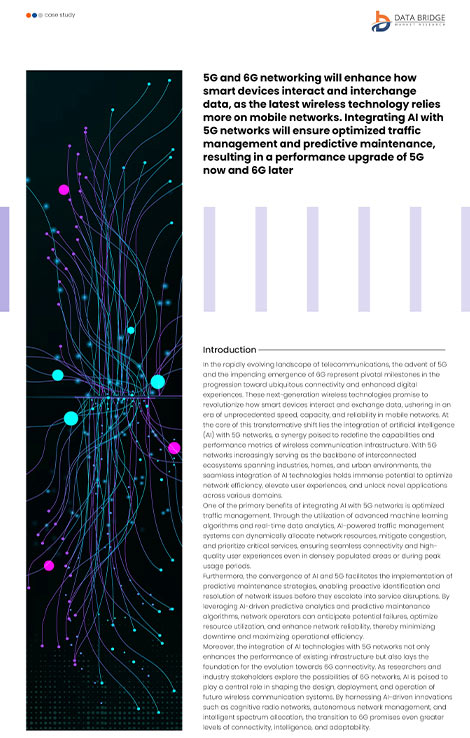Overview
In the rapidly evolving landscape of telecommunications, the advent of 5G and the impending emergence of 6G represent pivotal milestones in the progression toward ubiquitous connectivity and enhanced digital experiences. These next-generation wireless technologies promise to revolutionize how smart devices interact and exchange data, ushering in an era of unprecedented speed, capacity, and reliability in mobile networks. At the core of this transformative shift lies the integration of artificial intelligence (AI) with 5G networks, a synergy poised to redefine the capabilities and performance metrics of wireless communication infrastructure. With 5G networks increasingly serving as the backbone of interconnected ecosystems spanning industries, homes, and urban environments, the seamless integration of AI technologies holds immense potential to optimize network efficiency, elevate user experiences, and unlock novel applications across various domains.
One of the primary benefits of integrating AI with 5G networks is optimized traffic management. Through the utilization of advanced machine learning algorithms and real-time data analytics, AI-powered traffic management systems can dynamically allocate network resources, mitigate congestion, and prioritize critical services, ensuring seamless connectivity and high-quality user experiences even in densely populated areas or during peak usage periods.
Furthermore, the convergence of AI and 5G facilitates the implementation of predictive maintenance strategies, enabling proactive identification and resolution of network issues before they escalate into service disruptions. By leveraging AI-driven predictive analytics and predictive maintenance algorithms, network operators can anticipate potential failures, optimize resource utilization, and enhance network reliability, thereby minimizing downtime and maximizing operational efficiency.
Moreover, the integration of AI technologies with 5G networks not only enhances the performance of existing infrastructure but also lays the foundation for the evolution towards 6G connectivity. As researchers and industry stakeholders explore the possibilities of 6G networks, AI is poised to play a central role in shaping the design, deployment, and operation of future wireless communication systems. By harnessing AI-driven innovations such as cognitive radio networks, autonomous network management, and intelligent spectrum allocation, the transition to 6G promises even greater levels of connectivity, intelligence, and adaptability.
